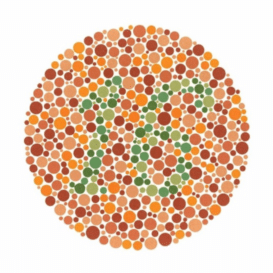
Have you ever wondered what it’s like to see the world through different eyes? Colour blindness, a condition that affects millions of people worldwide, offers a unique perspective on the vibrant hues that surround us. In this captivating exploration, we will delve into the mystery of this condition, uncovering its causes, symptoms and available treatments. From genetics to the impact on daily life, we’ll shed light on the fascinating intricacies of this condition. Whether you’re personally affected by colour deficiency or simply curious to learn more, this article will provide you with valuable insights and a deeper understanding of this often misunderstood phenomenon.
Types of Colour Blindness
Colour blindness is not a one-size-fits-all condition. There are different types, with its own unique characteristics and effects on vision. The most common type is red-green colour blindness, which affects the ability to distinguish between red and green hues. People with this type of blindness may see these colours as shades of grey or have difficulty differentiating between them.
Another type is blue-yellow, which impacts the perception of blue and yellow colours. Lastly, there is total colour blindness, also known as achromatopsia, where individuals cannot see any colours at all. Each type of colour deficiency has its own set of challenges and implications for those who live with it.
Causes
Colour blindness is typically caused by genetic mutations that affect the photopigments in the cones of the eye. Cones are the cells responsible for detecting and processing different wavelengths of light, allowing us to perceive colours. When these photopigments are faulty or missing, it can lead to colour vision deficiencies. The genes responsible for colour vision are located on the X chromosome, which is why colour deficiency is more common in men than women. In rare cases, colour blindness can also be acquired later in life due to certain medical conditions, such as age-related macular degeneration or optic nerve disorders.
Symptoms and Signs
While the specific symptoms of this condition can vary depending on the type and severity of the condition, there are some common signs to watch out for. Individuals with this deficiency may have difficulty distinguishing between certain colours, especially red and green or blue and yellow. They may also have a reduced ability to see shades and gradients of colours.
Other signs include confusion when matching or coordinating colours, trouble reading colour-coded information, and sensitivity to bright lights. It’s important to note that colour blindness is a spectrum, with varying degrees of impairment, ranging from mild to severe.
Diagnosis
If you suspect that you or someone you know may have colour blindness, it’s essential to seek a professional diagnosis. An eye care specialist or optometrist can perform various tests to determine the type and severity of colour blindness. One commonly used test is the Ishihara Colour Vision Test, which involves identifying numbers or patterns embedded within a series of coloured dots.
Another test is the Farnsworth-Munsell 100 Hue Test, which requires arranging colour chips in the correct order. These tests, along with a comprehensive eye examination, can provide a definitive diagnosis and help guide appropriate treatment options.
Treatment Options
While there is currently no cure for inherited colour blindness, there are some treatment options that can help individuals manage their condition and enhance their colour perception. One such option is the use of specially designed glasses or contact lenses that can filter or enhance certain wavelengths of light, making it easier to distinguish colours. These devices work by selectively blocking or altering the wavelengths that are problematic for individuals with colour blindness. However, it’s important to note that these aids may not work for everyone and their effectiveness can vary depending on the type and severity of colour blindness.
Living with Colour Blindness: Coping Strategies and Tips
Living with colour blindness can present unique challenges in various aspects of daily life. However, there are coping strategies and tips that can help individuals navigate these challenges more effectively. One approach is to rely on context cues and other visual cues to identify colours. For example, paying attention to the brightness or saturation of colours can provide valuable information. Additionally, using alternative methods of colour differentiation, such as patterns or textures, can be helpful. It’s also essential to communicate with others about your colour blindness and ask for assistance when needed. By embracing these strategies and seeking support, individuals with colour blindness can lead fulfilling lives and overcome obstacles.
Colour Blindness in Everyday Life: Challenges and Solutions
Colour blindness can have a significant impact on everyday life, from simple tasks like choosing clothes to more complex activities like reading charts or maps. For individuals with this condition, distinguishing between colours can be a constant source of frustration and confusion. However, there are solutions and adaptations that can make these tasks more accessible. For instance, using colour-blind-friendly apps or software that provide alternative colour schemes can be beneficial.
Employers and educators can also make accommodations, such as using labels or symbols in addition to colours. By creating inclusive environments and embracing accessibility measures, we can ensure that individuals with this condition have equal opportunities to participate in various activities.
Career Choices
This deficiency can influence career choices and limit certain professional paths. Certain occupations, such as graphic design, art, or electrical work, may require accurate colour vision for safety or job performance reasons. However, it’s important to note that this condition does not necessarily disqualify individuals from pursuing their desired careers. Many industries have implemented inclusive practices and technologies that accommodate these individuals. Moreover, individuals with colour blindness often developed heightened visual skills and problem-solving abilities, which can be valuable assets in many professions. By focusing on strengths and seeking out supportive work environments, individuals with colour deficiency can thrive in their chosen careers.
Conclusion: Embracing Diversity and Understanding Colour Blindness
In conclusion, colour blindness is a fascinating condition that offers a unique perspective on the world of colours. By exploring its causes, symptoms, and available treatments, we gain a deeper understanding of the challenges faced by those with colour vision deficiencies, it’s important to remember that this condition is not a limitation but rather a part of the rich tapestry of human diversity. By embracing inclusivity and implementing accessible measures, we can create a world that celebrates and accommodates individuals with colour deficiency. So, let us continue to unravel the mystery of colour blindness, one vibrant hue at a time, and appreciate the beauty that exists in all shadows of the spectrum.


